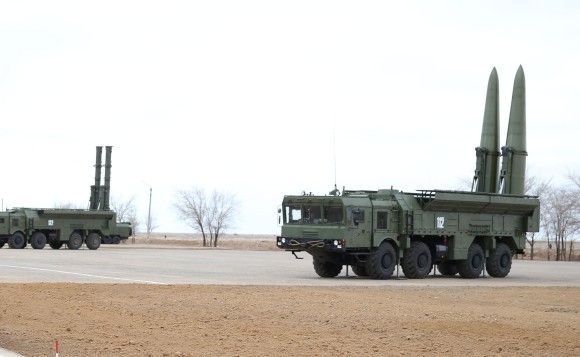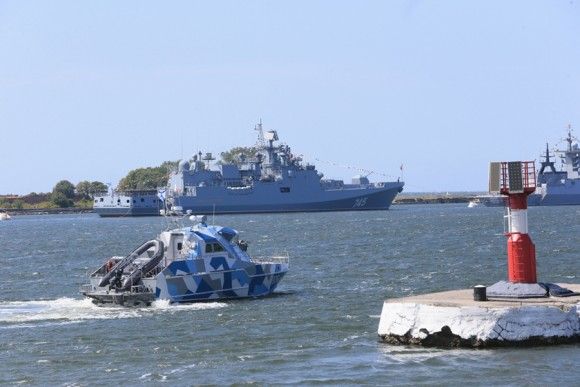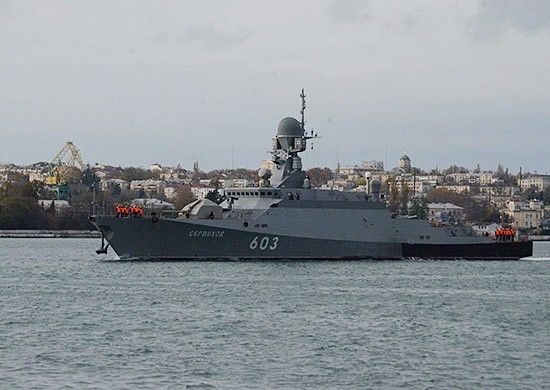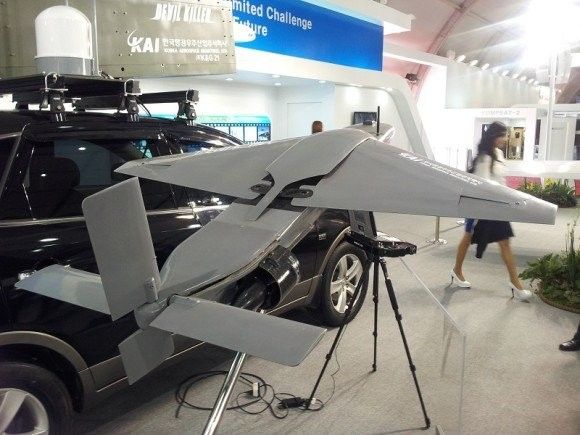Industry
MSPO 2016: OBR CTM Presents Mine Countermeasures and Communications Systems
OBR CTM S.A. is presenting, during the Kielce MSPO exhibition, its systems that have been designed for the Kormoran II class minehunter, including an underwater sensor-platform. Moreover, several models of radios designed for the land forces have also been showcased by the Polish company during the show.
Mock-up of the modern ORP “Kormoran” minehunter, with systems that were delivered and developed by the OBR CTM S.A company for this class of ships marked on it, constitutes one of the important elements of the OBR CTM S.A’s booth in Kielce. The ship’s model features well-marked command and control systems, along with passive countermeasures and selected key sensors and effectors. Moreover, the mock-up also makes it possible to present the underwater weapons systems created as a result of the research and development works carried out at the Centre.
Mine countermeasures presented onboard the Kormoran vessel are complemented with an underwater stabilized sensor platform developed by OBR CTM, as a part of the BURMIN programme which is being pursued by a consortium composed of the following entities: TUS – acting as a leader (FR), TNO (NL), RMA (BE), WTD 71 (DE), Fraunhofer ICT (DE), IPHT Jena (DE), Atlas Elektronik (DE) and CTM (PL). The consortium’s work also falls within the framework of the EDA UMS (European Defence Agency Unmanned Maritime Systems) programme.
The platform featuring a number of new generation hydro-acoustic and magnetic sensors, which may be towed by a manned or unmanned vessel, makes it possible to detect and classify the mines, including the mines buried within the bottom sediments. The platform is stabilized, and it maintains a required depth with the use of an autopilot which also prevents it from sudden pitch, yaw and depth variations.
It shall be noted that this solution has been first revealed to the public during the BALT MILITARY EXPO 2016 event, where the design in question received two awards: Distinction issued and awarded by the Polish Minister of Defence and the Rear Admiral Xawery Czernicki’s Grand Prix award.
When it comes to the equipment for the land forces, presented by OBR CTM in Kielce, this products group included, above all, two radios: RKP-8100 and RKS-8000. The Universal RKP-8100 radio is a new generation digital transmitting-receiving device, compliant with the requirements of the STANAG 4203, STANAG 4204 and of the STANAG 4205 standards. It is, according to the manufacturer, a modern backpack radio that could be successfully applied on the tactical level. The radio in question offers solutions that meet the needs within all aspects of tactical communications, along with unified, homogeneous and reduced requirements, when it comes to the logistics. RKP-8100 radio may be used as an element of the mobile radio-communications systems mounted on-board the wheeled and tracked-chassis platforms.
The applied RKP-8100AM-B mobile adapter expands the capabilities of a conventional backpack radio, transforming it into a device which may be utilized within the framework of a wide range of mobile applications. The whole communications suite has been integrated within a single device, and maximum power output has been increased up to 150W in case of the HF and up to 500W in case of the UHF applications.
Short-wave RKS-8000 radio is a communications device meeting the STANAG 4203 requirements. It is destined to be used as the basic building block of the stationary communication nodes, and of the mobile radiocommunications systems installed onboard wheeled and track-chassis vehicles. Digital voice transmission is carried out in line with the STANAG 4198 standard and it is also compliant with the MIL-STD-188-110B App. B norm.
On the other hand, the remote control of the radio is designed in line with the STANAG 5066 Annex E. The radio provides the user with the ALE option [Automatic Link Establishment], according to the MIL-STD-188-141B App. A. norm. Solid build quality and design made it possible for the RKS-8000 radio to achieve a high level of quality and operational reliability.





